Chapter 3 - Information Systems, Organizations, and Strategy
in Notes / Othermajors / Managementinformationsystems
4/3 ~
- 1: Organizations and Information Systems
- 2: How Information Systems Impact Organizations and Business Firms
- 3: Using Information Systems to Achieve Competitive Advantage
- 4: Using Systems for Competitive Advantage: Management Issues
1: Organizations and Information Systems
- not that important..
- Innovative Technoloy
-
Disruptive Technology : 외래성 기술
- like Big Bang, 다 갈아엎기, break into pieces
- better but tricky,
- first movers and fast followers
- ex: Computer’s ‘first movers’ =
MIT, fast followers =IBM,Apple - often fast followers benefit more than the first movers
- Exit Strategy required (과감히 다른 경로로 갈아탈 수 있는 여유 필요)
- Sustaining Technology: 존속성 기술
- incremental(점진적으)로 갈아엎음 , like 리모델링
- Sustaining Tech: 지속 가능
- Sustainable Tech: 지속 가능성, wider range of term
2: How Information Systems Impact Organizations and Business Firms
Economic Impacts (경제적 영향)
- 비용 절감 (IT기술로 인해 단순작업 인력 감소)
-
transaction cost theory (거래비용 이론) - transaction cost: 자체 제조 불가능한 제품을 온라인 마켓플레이스에서 구입하는 데 발생하는 비용
- theory: 기업은 production cost뿐만 아니라 transaction cost도 optimize 하고 싶어한다 (possible with the help of IT)
-
Agent theory (대리 이론) - aka 대리인 비용
- 회사 규모에 따라 기하급수적으로 expand 한다 (not linear)
-
예: 인력이 늘어남에 따라 more HR, 경비원, 등등을 뽑아야 하기 떄문
Organizational and Behavioral Impacts (조직정 영향)
- IT Flattens Organizations 평판조직화
-
윗사람일수록 힘듦...ㅋ
-
- Postindustrial Organizations 후기산업화
- 탈공업화 \(\Rightarrow\) 지식 사회, knowledge worker
Organizational Resistance to IS Innovations
- 조직에서 왜 저항이 (resistance)가 일어나는지 설명하는 모델
- 어느 한군데에 치우치면 갈등 시작함
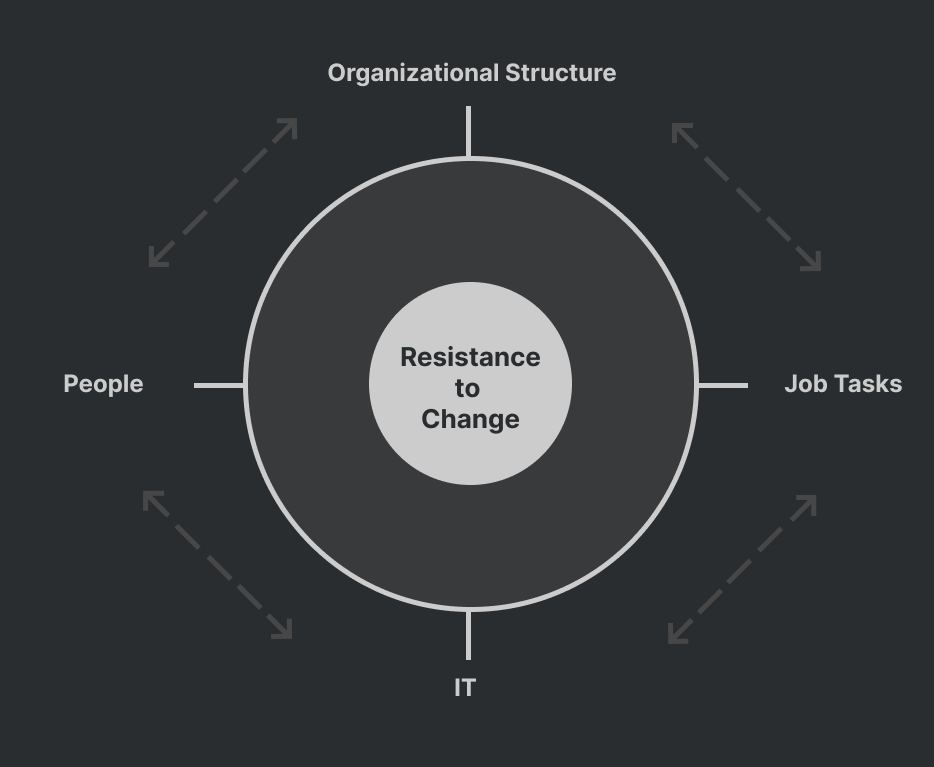
- 다이아몬드 모델이 더 많이 쓰인다
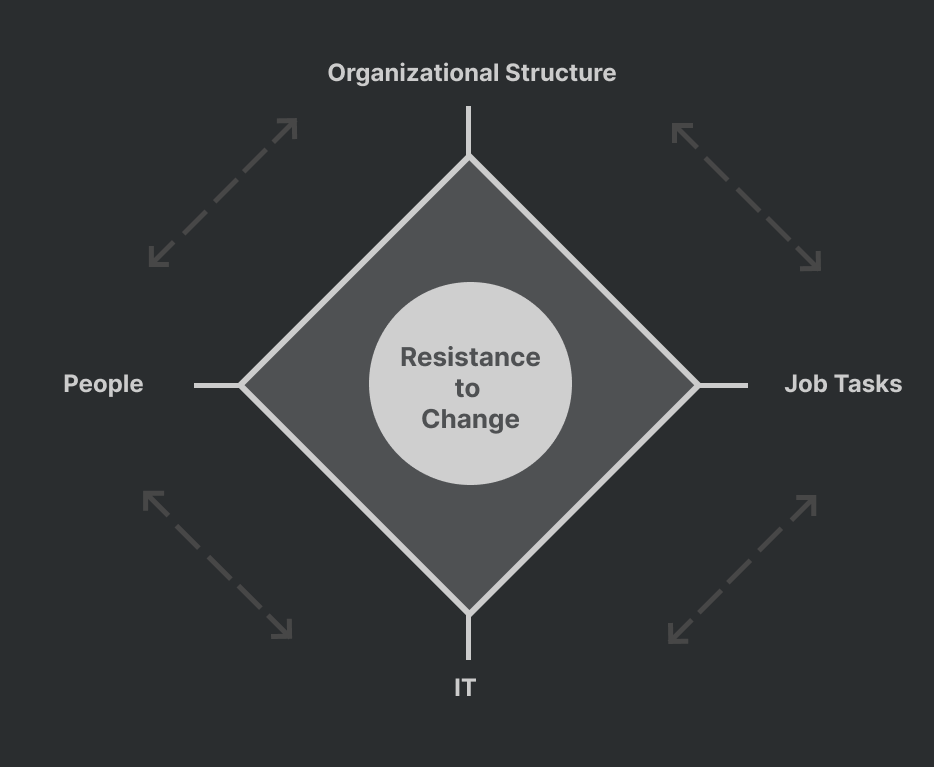
- The Internet and Organizations
- 관리자들의 internet, SNS에 대한 생각이 달라짐 (due to change in generation)
3: Using Information Systems to Achieve Competitive Advantage
- 정보시스템과 경영 전략 (모델과 전략을 제시, aka 이론)
Porter’s Competitive Forces Model
- aka 5-Force Model (五力), 5-요인 이론
- 5가지의 경쟁요인 by \(Michael\) \(Porter\) (경영전략의 대가)
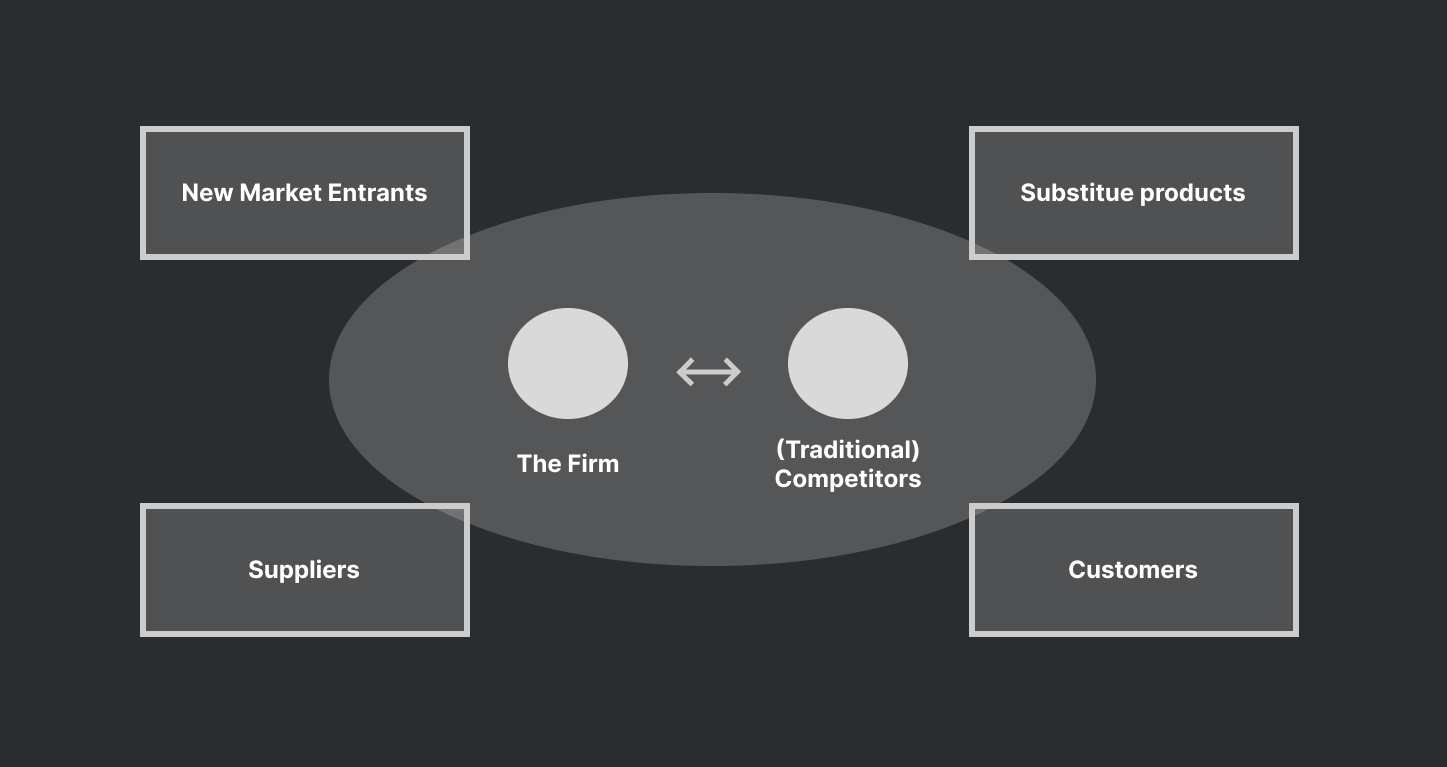
- Traditional Competitors (기존 사업자)
- New Market Entrants (신규 진입자)
- Substitute Products and Services
- so many alternatives \(\rightarrow\) stir up further compeition
- Customers: bargaining power of customers (고객의 협상력, 교섭력)
- Suppliers
- 해결전략
- Low-Cost Leadership (저원가 우위 전략)
- 대표사례: WalMart의
EDLP(“Everyday Low Price”) -
Efficient Customer Response System : 효율적 고객 반영 시스템
- continuous replenishment system: Walmart Exclusive
- 재고관리, 발주 단계 없이 즉각 반영 (바코드)
- 대표사례: WalMart의
- Product Differentiation (제품 차별화 전략)
- Mass Producton (대량생산): 기성복 같은 효율성 추구
- Customization : 초개인화st (색상, 사용자별 혜택, using cookies&cache for dynamic pricing)
- Focus on Market Niche (틈새시장 전략)
- Strengthen Customer and Supplier Intimacy: \(\Rightarrow\) 신뢰 형성
Business Value Chain Model
- 가치 사슬 모델 (가치망)
Industry Value Chain
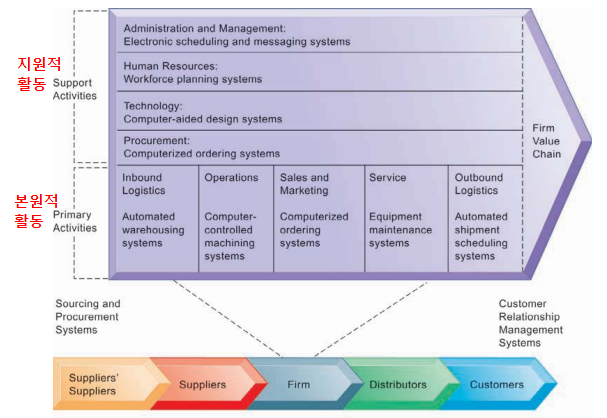
- Benchmarking: 상호 비교하는 과정
기업의 역할 : 가치가 없거나 낮은 것을 높은 가치의 것으로 변환시키는 것 \(\Rightarrow\) value chain \(V_{\downarrow} \rightarrow V_*\)
The Value Web
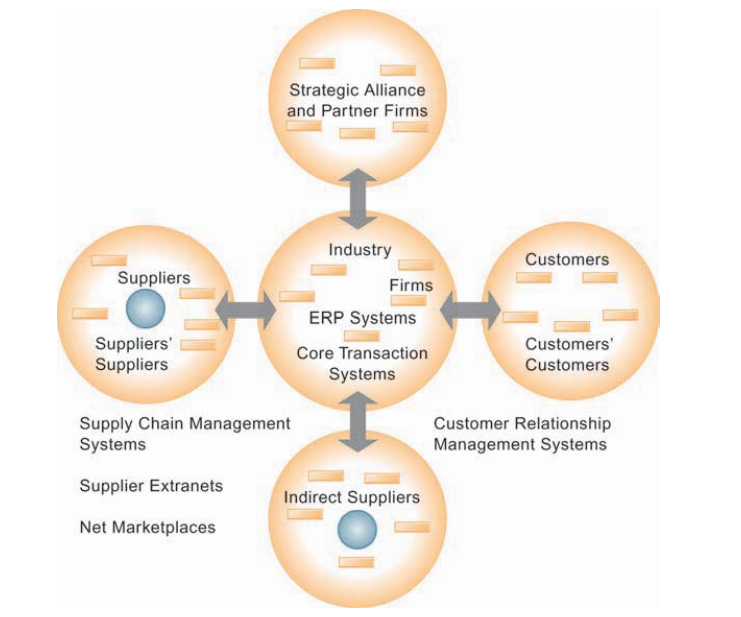
- 해결전략
- Synergies (시너지 효과): collaborate
- Enhancing Core Competencies (핵심역량 강화), 선택과 집중
- Network-Based Strategies (네트워크 기반 전략)
- Network Economics (하지만 잦은 정치적 갈등으로 온전한 네트워크 경제가 형성되지 못하고 있음)
- Virtual Company Model
- Business Ecosystems Keystone and Niche Firms : 비즈니스 먹이사슬 st
4: Using Systems for Competitive Advantage: Management Issues
- 경영자들은 어떤 자세/태도로 임해야 하는가
Sustaining Competitive Advantage
- Aligning with Business Objectives
- 조정 \(\cdot\) 조화 시킨다 (but
align이라는 단어 더 자주 사용)
- 조정 \(\cdot\) 조화 시킨다 (but
- Review Questions
